2018 IEEE CAS Singapore Chapter Talks and Seminars
- 25-01-2018: Technical Talk "Lifespan Protection: Upcoming Automotive Security & Privacy Challenges and Solutions", by Prof. Mathias Dehm, Continental.
- 25-01-2018: Technical Talk "Application of Deep Learning Neural Networks for Infant Crying Detection and Recognition", by Prof. Chuan-Yu Chang, National Yunlin University of Sciences and Technology, Taiwan.
- 29-01-2018: Technical Talk "Spectral Arithmetic: Modular Arithmetic and Architecture in Public-key Cryptography", by Prof. Chak Chung CHEUNG, Ray, City University of Hong Kong.
- 01-02-2018: Technical Talk "Applied Machine Learning: From Theory to Practice", by YIN Hongxu, Ph.D candidate, Princetone University.
- 23-02-2018: Distinguished Lecture "Zero-cost Security for Embedded Systems by Compressed Sensing", by Prof. Riccardo Rovatti, University Bologna, Italy.
- 27-03-2018: Technical Talk "Do We really Know How to Compute Geometric Progressions?", by Prof. Vassil Dimitrov, University of Calgary, Canada.
- 29-03-2018: Technical Talk "The Development of the Multiple-base Number Systems: Applications in Digital Signal Processing and Cryptography", by Prof. Vassil Dimitrov, University of Calgary, Canada.
- 23-04-2018: Distinguished Lecture "CMOS Design for DNA Detection Using Ion-Sensitive Field Effect Transistor", by Prof. Pantelis Georgiou, Imperial College London.
- 15-05-2018: Technical Talk "Brain-like Cognitive Engineering Systems", by Prof. Jan M. Rabaey, University of California at Berkeley.
- 17-05-2018: Technical Talk "Let's Get Physical: Adding Physical Dimensions to Cyber Systems", by Prof. Alberto Sangiovanni Vincentelli, University of California at Berkeley.
- 08-06-2018: Technical Talk "Macroscopy to Microscopy: A journey traversing through biomedical imaging / instrumentation, application to pre-clinical studies and high performance computing", by Prof. Srivathsan Vasudevan, Indian Institute of Technology, India.
- 03-07-2018: Technical Talk "Intra Prediction in Versatile Video Coding (VVC)", by Prof. Nam LING, Santa Clara University, USA.
- 03-07-2018: Technical Talk "Supply Modulators: Fundamentals, Design Challenges and Tradeoffs for High Power-Efficiency, High-Bandwidth, and Low Noise", by Dr. Tong GE, Nanyang Technological University, Singapore.
- 02-08-2018: Technical Talk "The First Step for AI-based Deep Language Understanding", by Dr. Zhaoxia WANG, Agency for Science, Technology and Research (A*STAR), Singapore.
- 04-10-2018: Technical Talk "Causal Analysis and an Example in Neurology", by Dr Haoqi SUN, Postdoc Research Fellow, Department of Neurology, Massachusetts General Hospital, USA.
- 04-10-2018: Technical Talk "Data Science in SingHealth Duke-NUS Academic Medical Centre", by Prof LIU Nan, Assistant Professor, Duke-NUS Medical School, National University of Singapore Principal Investigator, Health Services Research Centre, SingHealth.
- 05-11-2018: Technical Talk "A Cognitive Architecture for Object Recognition in Video", by Prof. Jose Principe, Distinguished Professor of Electrical Engineering, University of Florida.
- 12-11-2018: Technical Talk "Cross-Space Crowd Sensing: Concepts, Technologies, and Practices", by Prof. Zhiwen Yu, School of Computer Science, Northwestern Polytechnical University, China.
- 13-11-2018: Technical Talk "Simple Formulae for the Synthesis of Classical Recursive Digital Filters and Generalizations", by Prof. Tapio Saramaki, Tampere University of Technology, Finland.
- 13-11-2018: Technical Talk "Feature LMS Algorithms: Exploiting Hidden Sparsity", by Prof. Paulo S. R. Diniz, Universidade Federal do Rio de Janeiro, Brazil.
- 23-11-2018: Technical Talk "Complex Action Recognition in Constrained and Unconstrained Videos", by Prof. Q.M. Jonathan Wu, University of Windsor, Canada.
- 23-11-2018: Technical Talk "Redundancy in Deep Neural Networks", by Prof. Gao Huang, Tsinghua University, China.
- 29-11-2018: Technical Talk 1: "Polynomial-Based Interpolation for Digital Signal Processing and Communications Applications", Talk 2: "Efficient Techniques for Image Re-Sampling", by Prof. Tapio Saramaki, Tampere University of Technology, Finland.
- 26-12-2018: Technical Talk "Almost Tight Biorthogonal Wavelet Filters: Design and Efficient Implementation", by Prof. David B. H. Tay, Deakin University, Australia.
A Cognitive Architecture for Object Recognition in VideoProf. Jose Principe, Distinguished Professor of Electrical Engineering, University of FloridaOrganized by IEEE Circuits and Systems Singapore Chapter & Centre for Bio Devices and Signal Analysis (VALENS), School of EEE, NTU |
| Date : 5 November 2018 (Monday) Time : 10.30 AM - 11.30 AM Venue : Executive Seminar Room (S2.2-B2-53), NTU |
AbstractThis talk describes our efforts to abstract from the animal visual system the computational principles to explain images in video. We develop a hierarchical, distributed architecture of dynamical systems that self-organizes to explain the input imagery using an empirical Bayes criterion with sparseness constraints and dual state estimation. The interpretation of the images is mediated through causes that flow top down and change the priors for the bottom up processing. We will present preliminary results in several data sets. Speaker Biography
Dr. Principe is an IEEE Fellow. He was the past Chair of the Technical Committee on Neural Networks of the IEEE Signal Processing Society, Past-President of the International Neural Network Society, and Past-Editor in Chief of the IEEE Transactions on Biomedical Engineering. He is a member of the Advisory Board of the University of Florida Brain Institute. Dr. Principe has more than 800 publications. He directed 92 Ph.D. dissertations and 65 Master theses. He wrote in 2000 an interactive electronic book entitled “Neural and Adaptive Systems” published by John Wiley and Sons and more recently co-authored several books on “Brain Machine Interface Engineering” Morgan and Claypool, “Information Theoretic Learning”, Springer, and “Kernel Adaptive Filtering”, Wiley. |



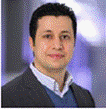
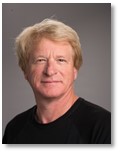
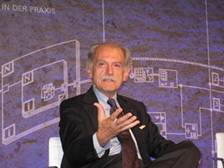
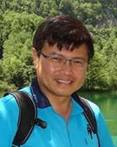 Nam Ling received the B.Eng. degree from the National University of Singapore and the M.S. and Ph.D. degrees from the University of Louisiana, Lafayette, U.S.A. He is currently the Sanfilippo Family Chair Professor (University Endowed Chair) of Santa Clara University (U.S.A) and the Chair of its Department of Computer Engineering. From 2002 to 2010, he was an Associate Dean for its School of Engineering. Currently, he is also a Chair Professor for Fuzhou University, a Cuiying Chair Professor for Lanzhou University, a Distinguished Professor for Xi’an University of Posts & Telecommunications, a Guest Professor for Tianjin University, a Guest Professor for Shanghai Jiao Tong University (China), and a Consulting Professor for the National University of Singapore. He has more than 200 publications (including books) in video/image coding and systolic arrays. He also has seven adopted standards contributions and has filed/granted more than 20 U.S./European/PCT patents. He is an IEEE Fellow due to his contributions to video coding algorithms and architectures. He is also an IET Fellow. He was named IEEE Distinguished Lecturer twice and was also an APSIPA Distinguished Lecturer. He received the IEEE ICCE Best Paper Award (First Place) and the IEEE Umedia Best Paper Award (twice). He received six awards from the University, four at the University level (Outstanding Achievement, Recent Achievement in Scholarship, President’s Recognition, and Sustained Excellence in Scholarship) and two at the School/College level (Researcher of the Year and Teaching Excellence). He has served as Keynote Speaker for IEEE APCCAS, VCVP (twice), JCPC, IEEE ICAST, IEEE ICIEA, IET FC & U-Media, IEEE U-Media, and Workshop at XUPT (twice), as well as a Distinguished Speaker for IEEE ICIEA. He is/was General Chair/Co‑Chair for IEEE Hot Chips, VCVP (twice), IEEE ICME, IEEE U-Media (four times), and IEEE SiPS. He was an Honorary Co-Chair for IEEE Umedia. He has also served as Technical Program Co‑Chair for IEEE ISCAS, APSIPA ASC, IEEE APCCAS, IEEE SiPS (twice), DCV, and IEEE VCIP. He was Technical Committee Chair for IEEE CASCOM TC and IEEE TCMM, and has served as Guest Editor/Associate Editor for IEEE TCAS‑I, IEEE J-STSP, Springer JSPS, Springer MSSP, and other journals. He has delivered more than 120 invited colloquia worldwide and has served as Visiting Professor/Consultant/Scientist for many institutions/companies.
Nam Ling received the B.Eng. degree from the National University of Singapore and the M.S. and Ph.D. degrees from the University of Louisiana, Lafayette, U.S.A. He is currently the Sanfilippo Family Chair Professor (University Endowed Chair) of Santa Clara University (U.S.A) and the Chair of its Department of Computer Engineering. From 2002 to 2010, he was an Associate Dean for its School of Engineering. Currently, he is also a Chair Professor for Fuzhou University, a Cuiying Chair Professor for Lanzhou University, a Distinguished Professor for Xi’an University of Posts & Telecommunications, a Guest Professor for Tianjin University, a Guest Professor for Shanghai Jiao Tong University (China), and a Consulting Professor for the National University of Singapore. He has more than 200 publications (including books) in video/image coding and systolic arrays. He also has seven adopted standards contributions and has filed/granted more than 20 U.S./European/PCT patents. He is an IEEE Fellow due to his contributions to video coding algorithms and architectures. He is also an IET Fellow. He was named IEEE Distinguished Lecturer twice and was also an APSIPA Distinguished Lecturer. He received the IEEE ICCE Best Paper Award (First Place) and the IEEE Umedia Best Paper Award (twice). He received six awards from the University, four at the University level (Outstanding Achievement, Recent Achievement in Scholarship, President’s Recognition, and Sustained Excellence in Scholarship) and two at the School/College level (Researcher of the Year and Teaching Excellence). He has served as Keynote Speaker for IEEE APCCAS, VCVP (twice), JCPC, IEEE ICAST, IEEE ICIEA, IET FC & U-Media, IEEE U-Media, and Workshop at XUPT (twice), as well as a Distinguished Speaker for IEEE ICIEA. He is/was General Chair/Co‑Chair for IEEE Hot Chips, VCVP (twice), IEEE ICME, IEEE U-Media (four times), and IEEE SiPS. He was an Honorary Co-Chair for IEEE Umedia. He has also served as Technical Program Co‑Chair for IEEE ISCAS, APSIPA ASC, IEEE APCCAS, IEEE SiPS (twice), DCV, and IEEE VCIP. He was Technical Committee Chair for IEEE CASCOM TC and IEEE TCMM, and has served as Guest Editor/Associate Editor for IEEE TCAS‑I, IEEE J-STSP, Springer JSPS, Springer MSSP, and other journals. He has delivered more than 120 invited colloquia worldwide and has served as Visiting Professor/Consultant/Scientist for many institutions/companies.  Dr. Ge Tong received her B.Eng and Ph.D both from NTU and she is currently working as a senior Research Scientist and leading several research projects as PI and co-PI with total research funding of >1.5M dollars. She is a multi-disciplinary researcher, and her research includes high speed high power switching mode IC such as Ultra high fidelity and ultra low noise audio Class D amplifier, high power-efficiency Envelope Tracking RF Power Amplifiers, high bandwidth Supply Modulator for RF PAs, and etc. Her research also includes flexible electronics, organic electronics and the applications for healthcare and IoT devices. She has published over 60 papers in premiere IEEE journals and conferences, and holds over 20 patents and patent applications. Two of her patents have licensed to commercial companies. She has given 9 invited talks at major IEEE conferences. She served as an Associate Editor of the IEEE Transactions on circuits and systems, and organized several IEEE premiere conferences as Publicity Chair/Co-Chair, Publication Chair/co-Chair, and Technical Chair/co-Chair, etc. She also served as the best paper review committee for the 2018 IEEE International Symposium on Circuits and Systems (Biomedical Circuits and Systems track).
Dr. Ge Tong received her B.Eng and Ph.D both from NTU and she is currently working as a senior Research Scientist and leading several research projects as PI and co-PI with total research funding of >1.5M dollars. She is a multi-disciplinary researcher, and her research includes high speed high power switching mode IC such as Ultra high fidelity and ultra low noise audio Class D amplifier, high power-efficiency Envelope Tracking RF Power Amplifiers, high bandwidth Supply Modulator for RF PAs, and etc. Her research also includes flexible electronics, organic electronics and the applications for healthcare and IoT devices. She has published over 60 papers in premiere IEEE journals and conferences, and holds over 20 patents and patent applications. Two of her patents have licensed to commercial companies. She has given 9 invited talks at major IEEE conferences. She served as an Associate Editor of the IEEE Transactions on circuits and systems, and organized several IEEE premiere conferences as Publicity Chair/Co-Chair, Publication Chair/co-Chair, and Technical Chair/co-Chair, etc. She also served as the best paper review committee for the 2018 IEEE International Symposium on Circuits and Systems (Biomedical Circuits and Systems track). 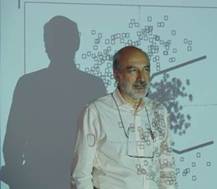 Jose C. Principe (M’83-SM’90-F’00) is a Distinguished Professor of Electrical and Computer Engineering and Biomedical Engineering at the University of Florida where he teaches advanced signal processing, machine learning and artificial neural networks (ANNs) modeling. He is BellSouth Professor and the Founder and Director of the University of Florida Computational NeuroEngineering Laboratory (CNEL)
Jose C. Principe (M’83-SM’90-F’00) is a Distinguished Professor of Electrical and Computer Engineering and Biomedical Engineering at the University of Florida where he teaches advanced signal processing, machine learning and artificial neural networks (ANNs) modeling. He is BellSouth Professor and the Founder and Director of the University of Florida Computational NeuroEngineering Laboratory (CNEL) 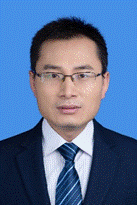 Dr. Zhiwen Yu is currently a professor of the School of Computer Science, Northwestern Polytechnical University, China. He has worked as an Alexander Von Humboldt Fellow at Mannheim University, Germany from Nov. 2009 to Oct. 2010, a research fellow at Kyoto University, Japan from Feb. 2007 to Jan. 2009, and a post-doctoral researcher at Nagoya University, Japan in 2006-2007. His research interests cover ubiquitous computing, mobile social networks, and human-computer interaction. He has served as an associate/guest editor for a number of international journals, such as IEEE Transactions on Human-Machine Systems, IEEE Communications Magazine, and ACM Transactions on Intelligent Systems and Technology. He is the General Co-Chair of SmartCity 2016, CPSCom 2015, General Chair of UIC 2014, the Program Chair of EUC 2013, HumanCom 2012, and UIC 2010, the Vice Program Chair of PerCom 2015, the Workshop Chair of UbiComp 2011. He has published around 150 scientific papers in refereed journals and conferences, e.g., ACM Computing Surveys, IEEE TKDE, IEEE TMC, IEEE THMS, ACM TKDD, UbiComp, PerCom, etc. Zhiwen Yu is a senior member of IEEE, a distinguished member of CCF (China Computer Federation) and the vice chair of CCF Pervasive Computing Technical Committee. He received the CCF Young Scientist Award in 2011, the CPSCom'13/GPC'12/AMT'12/UIC'09 best paper awards, the Humboldt Fellowship in 2008, and the CCF Excellent Doctoral Dissertation Award in 2006. He got the National Science Fund for Distinguished Young Scholars in 2017.
Dr. Zhiwen Yu is currently a professor of the School of Computer Science, Northwestern Polytechnical University, China. He has worked as an Alexander Von Humboldt Fellow at Mannheim University, Germany from Nov. 2009 to Oct. 2010, a research fellow at Kyoto University, Japan from Feb. 2007 to Jan. 2009, and a post-doctoral researcher at Nagoya University, Japan in 2006-2007. His research interests cover ubiquitous computing, mobile social networks, and human-computer interaction. He has served as an associate/guest editor for a number of international journals, such as IEEE Transactions on Human-Machine Systems, IEEE Communications Magazine, and ACM Transactions on Intelligent Systems and Technology. He is the General Co-Chair of SmartCity 2016, CPSCom 2015, General Chair of UIC 2014, the Program Chair of EUC 2013, HumanCom 2012, and UIC 2010, the Vice Program Chair of PerCom 2015, the Workshop Chair of UbiComp 2011. He has published around 150 scientific papers in refereed journals and conferences, e.g., ACM Computing Surveys, IEEE TKDE, IEEE TMC, IEEE THMS, ACM TKDD, UbiComp, PerCom, etc. Zhiwen Yu is a senior member of IEEE, a distinguished member of CCF (China Computer Federation) and the vice chair of CCF Pervasive Computing Technical Committee. He received the CCF Young Scientist Award in 2011, the CPSCom'13/GPC'12/AMT'12/UIC'09 best paper awards, the Humboldt Fellowship in 2008, and the CCF Excellent Doctoral Dissertation Award in 2006. He got the National Science Fund for Distinguished Young Scholars in 2017.